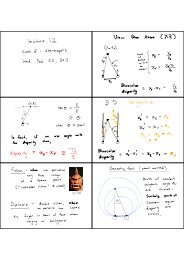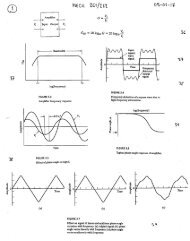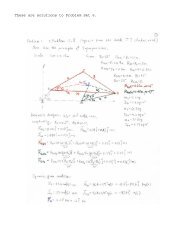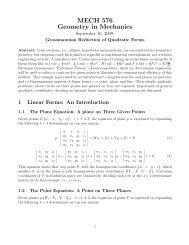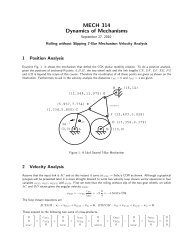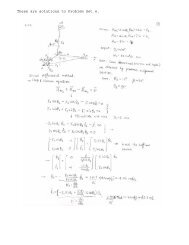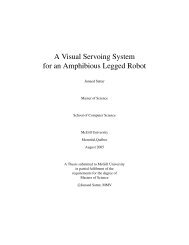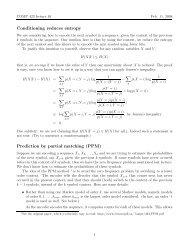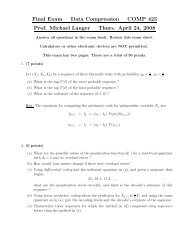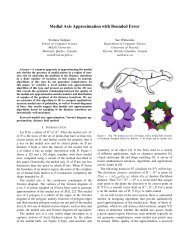Medial Spheres for Shape Representation - CIM - McGill University
Medial Spheres for Shape Representation - CIM - McGill University
Medial Spheres for Shape Representation - CIM - McGill University
Create successful ePaper yourself
Turn your PDF publications into a flip-book with our unique Google optimized e-Paper software.
points to medial points that are not detected by our algorithm <strong>for</strong> a finite sampling<br />
rate. Section 3.4 shows how the quality of the undetected medial points can be<br />
measured under certain conditions.<br />
• Chapter 4 looks at the significantly easier 2D case and considers theoretical prop-<br />
erties of an algorithm <strong>for</strong> computing the medial axis of a 2D solid, based on tools<br />
used in the 3D case. We develop additional tools to the ones used in the 3D case<br />
<strong>for</strong> detecting medial points in Section 4.1. Section 4.3 gives a complete geometric<br />
description of those medial points that are undetected by these tools.<br />
• Section 5.4 presents a numerical method that allows us to estimate the principal<br />
curvatures and principal curvature directions at the two implied boundary patches on<br />
either side of each approximate medial point, given a dense sampling of approximate<br />
medial points and their spoke vector estimates.<br />
• Sections 6.2 and 6.3 present a method by which the individual sheets of the dis-<br />
crete medial surface approximation may be ordered by significance. This allows<br />
us to substantially reduce the size of the resulting part-based representation and to<br />
simplify the shape of the solid.<br />
• Chapter 7 looks at the application of our shape representation to the problem of<br />
quickly generating a well-fitting sphere-based approximation to a polyhedron. We<br />
show how volumetric error of sphere-based shape representations can be evaluated<br />
in Section 7.3. Compared to a state-of-the-art method <strong>for</strong> approximating polyhedra<br />
with spheres, we show that our method is significantly faster and provides a tighter<br />
fit in terms of volumetric error in Section 7.3. When a model undergoes local feature<br />
size preserving de<strong>for</strong>mation, we show in Section 7.4 how the sphere approximation<br />
20



